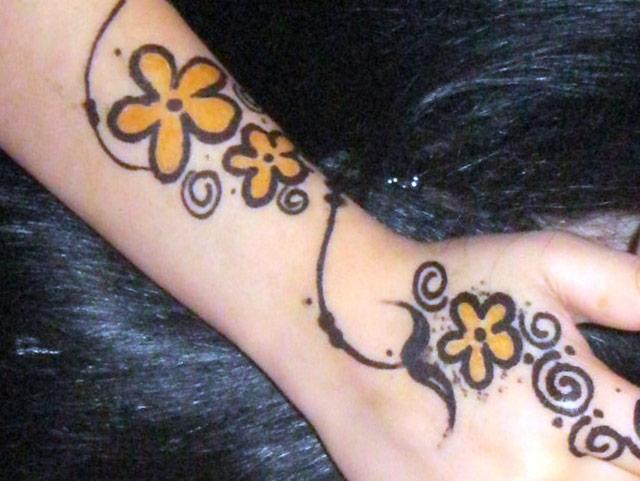
Why dot your skin with a chemical found in coal tar?
Black henna drawings on skin are associated with rashes and blisteringAround Seattle, where seemingly every third adult is tattooed, adolescents and children may be more eager for their own body art. Vendors at street fairs and festivals are at the ready, dotting kids’ faces and limbs with henna, the reddish-brown dye that has long been part of India’s culture.
That product is historically not cause for health concerns – but a rise in street vendors’ use of black henna has resulted in skin reactions that prompt doctor visits.

“The black henna, which lasts longer, is made from a coal-tar-derived chemical called paraphenylenediamine, or PPD. When that’s put on your skin, especially in the concentrations being used for these temporary tattoos, it can cause allergic-contact dermatitis,” said Dr. Lisa Maier, a UW Medicine dermatologist.
Contact dermatitis is an itchy rash that is red and inflamed, sometimes with blistering. Blistering heightens the chance of scarring or long-term skin discoloration, Maier said.
“I’m especially concerned for young children, who have thinner skin, which raises their risk for developing contact dermatitis. Once you develop sensitivity to PPD, it can last your whole life. You also can develop cross-reactions to chemicals in some medications.”
Although PPD can be found in some hair dyes, the risks are enough that U.S. Food and Drug Administration prohibits the application of PPD on the skin.
Not everyone develops adverse skin reactions, but why take the chance?
Related: Downloadable video of Dr. Suzinne Pak-Gorstein discussing the safety of tattoos and black henna drawings.
For details about UW Medicine, please visit https://uwmedicine.org/about.
Tags:dermatologytattoos
